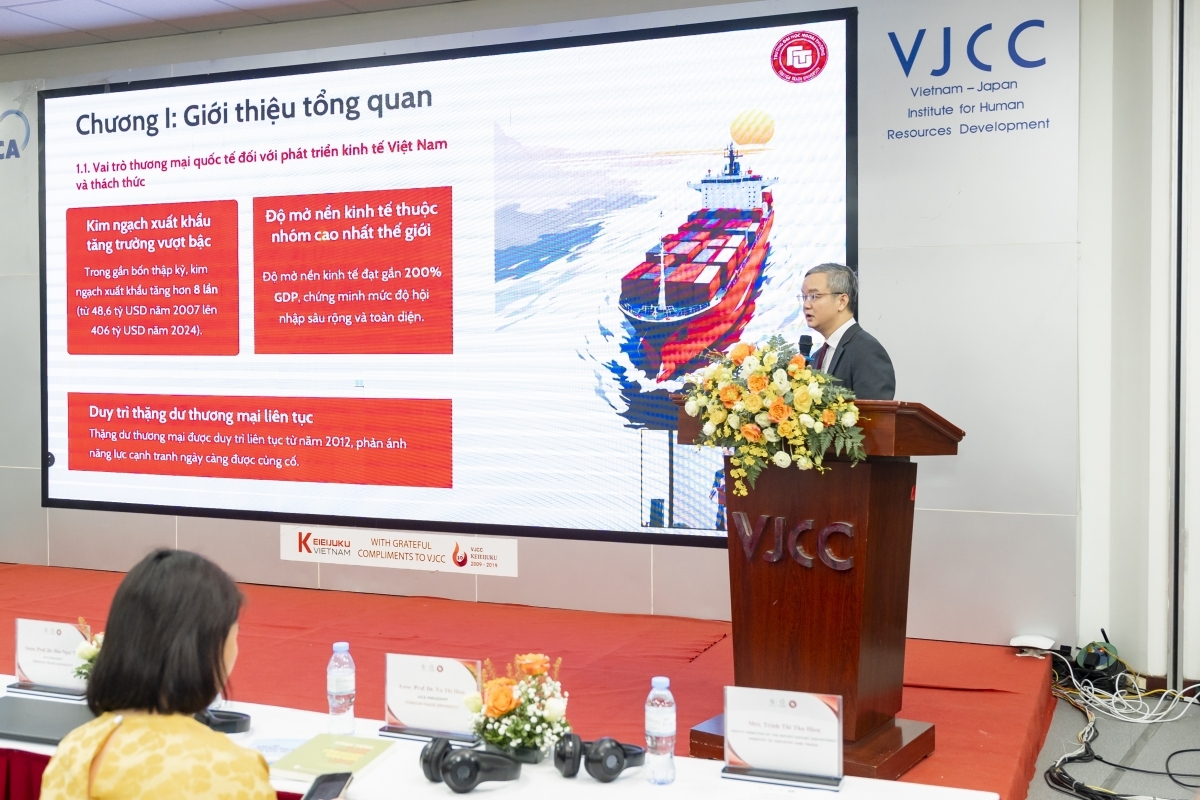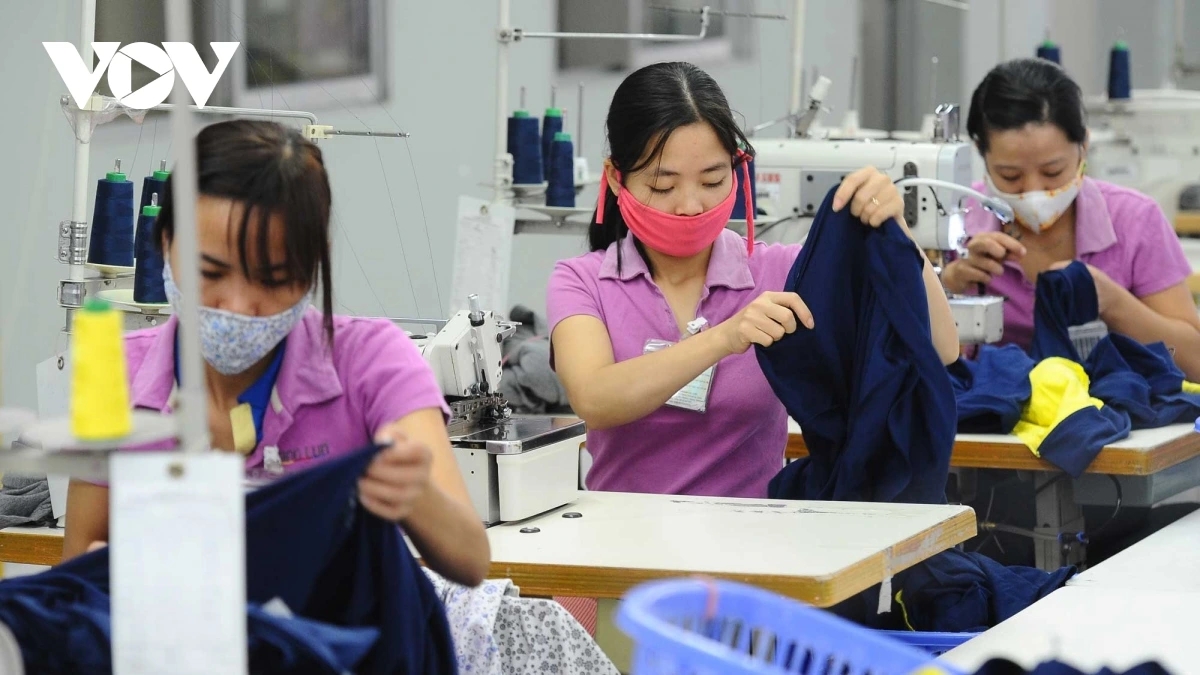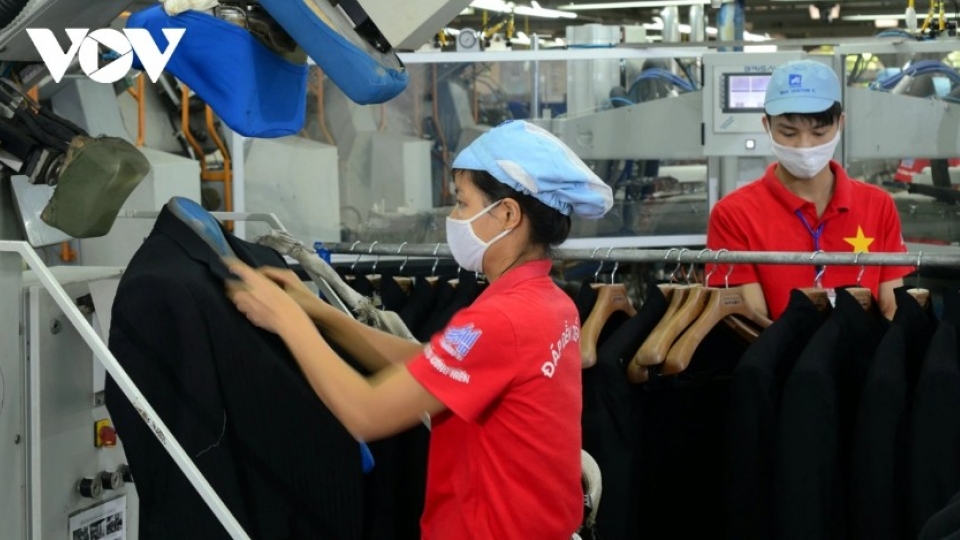Four pillars to drive Vietnam’s foreign trade amid global transformation
VOV.VN - The Vietnam International Trade Report 2025, released by the Foreign Trade University (FTU) on October 10 in Hanoi, identifies four new strategic growth drivers to help Vietnam sustain integration momentum, elevate its position, and ensure sustainable development in the new era.

The report, released as part of the Vietnam Foreign Trade International Forum (VFIT) 2025, has been developed with the objective of identifying and analyzing in-depth four new cross-cutting growth drivers emerging at the global level but materialised and coordinated at the national and enterprise levels.
In her opening remarks, Associate Professor Dr. Pham Thu Huong, President of the Foreign Trade University, emphasised that after nearly four decades of renovation, Vietnam has achieved remarkable economic and social progress, becoming one of the world’s top 20 trading economies.
However, she said, amid rapid changes in global value chains, the rise of the digital economy, and increasing demands for green growth, Vietnam must shift from a low-cost, factor-driven model to one based on productivity, innovation, and higher value creation.
According to Associate Professor Dr. Dao Ngoc Tien, Vice President of the Foreign Trade University, the VFIT 2025 Report highlights four key growth drivers that reflect both global trends and Vietnam’s specific development context.
It underscores that next-generation Free Trade Agreements (FTAs) serve as institutional engines for reform and deep integration.
Vietnam remains the only country in Southeast Asia to participate in almost all next-generation FTAs such as the Comprehensive and Progressive Agreement for Trans-Pacific Partnership (CPTPP), EU-Vietnam Free Trade Agreement (EVFTA), UK-Vietnam Free Trade Agreement (UKVFTA), and Regional Comprehensive Economic Partnership (RCEP). These FTAs not only expand Vietnam’s export markets to over 60 economies that account for nearly 90% of global GDP, but also create a positive reform pressure that promotes transparency, institutional modernisation, and competitiveness.
Effective implementation of these FTAs will help Vietnam enhance national competitiveness, attract high-quality investment, and accelerate technology transfer.
In addition, the report says, digital trade is emerging as a core technological driver of growth, especially as global consumption and transactions shift rapidly to online platforms.
Statistics show Vietnam’s e-commerce market hit nearly US$25 billion in 2024, growing by over 20% from the previous year. Strengthening digital infrastructure, smart logistics, and big data management will enable Vietnamese enterprises, particularly small and medium-sized enterprises (SMEs), to reach global customers more efficiently, reduce transaction costs, and shorten supply chains.

The report points out that sustainable trade is a normative driver for global market access. In the “green economy” era, environmental, social, and governance (ESG) standards have become the new passport for global trade. Promoting sustainable trade will help Vietnamese businesses not only adapt to new technical barriers such as the EU’s Carbon Border Adjustment Mechanism (CBAM), but also strengthen Vietnam’s global brand.
The report notes that global value chains are structural drivers to elevate Vietnam’s position. It says that the ongoing restructuring of global supply chains offers Vietnam an opportunity to redefine its position in the world production network.
With its stable geopolitics, improving infrastructure, and extensive trade agreements, Vietnam has the potential to attract multinational corporations relocating from traditional manufacturing hubs. However, to truly climb up the global value chain, Vietnam must focus on developing supporting industries, logistics capacity, and high-quality human resources, while strengthening linkages between foreign-invested and domestic enterprises to increase local content and value-added in exports.
Experts at the forum agreed that realising these four growth drivers requires a comprehensive strategy combining institutions, technology, human capital, and market development. The Government should play a facilitating role in institutional reform, while businesses serve as the core of innovation, and universities act as bridges connecting knowledge, policy, and the market.
Based on its scientific, open, and constructive approach, the VFIT 2025 Report serves not only as a review of trends but also as a strategic roadmap for Vietnam’s trade development in the coming years.






